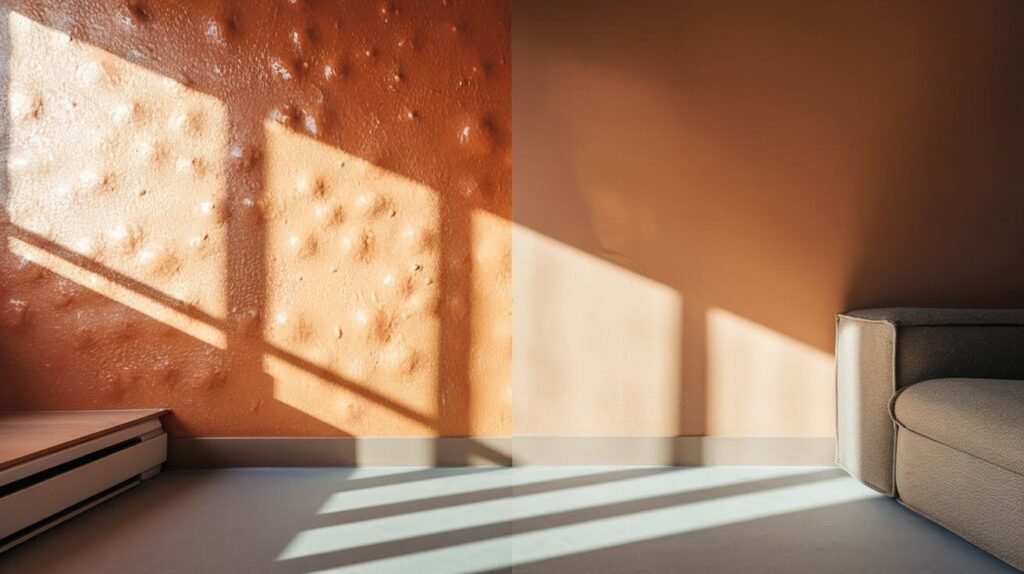When you’re updating your walls, choosing between orange peel texture and a smooth finish can be tougher than it looks. I’ve worked with both styles in real homes, some with kids, some high-end, and some on tight budgets. Each option has its pros, but the best choice depends on your space, your goals, and how much upkeep you want.
In this guide, you’ll get honest comparisons based on real-world jobs, not theory. We’ll cover how each finish looks, what it costs, how long it lasts, and what it takes to keep it looking good. I’ll also explain how lighting and room type can change what works best.
No guesswork, no pressure, just tested advice from years of hands-on work. By the end, you’ll know exactly which wall texture fits your needs so you can move forward with confidence and avoid costly changes later.
What is Wall Texture and Why Does it Matter?
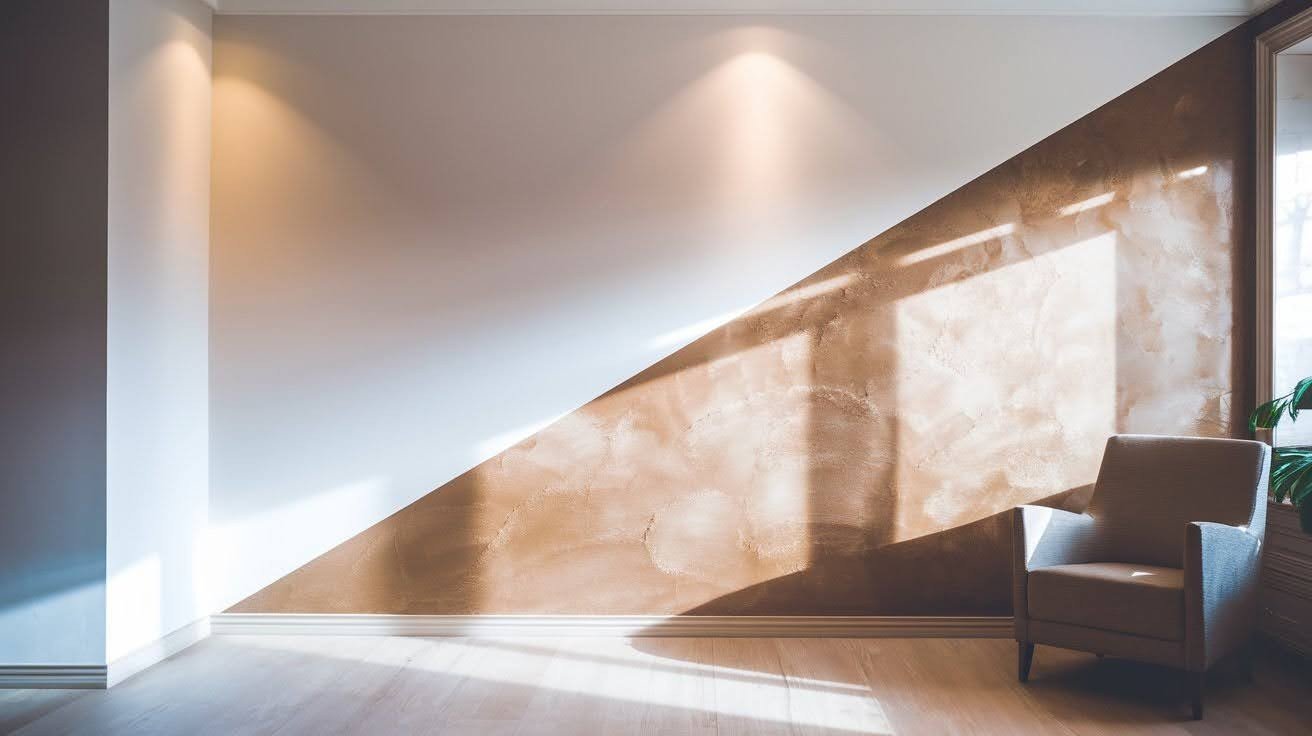
Wall texture is the finish applied to drywall after installation. Think of it as the final layer that gives your walls their look and feel. Why do we texture walls?
Simple. It hides those ugly drywall tape lines and seams that would otherwise show through paint. Nobody wants to see where drywall panels meet. Texture does more than cover mistakes, though.
It changes how light moves across your walls. Smooth surfaces reflect light evenly. Textured walls create small shadows that add depth and visual interest. Here’s something most people don’t know: texture affects your home’s value.
In some regions, smooth walls are standard. In others, textured finishes are expected. The choice you make impacts how your rooms feel and how much maintenance you’ll do later.
Understanding Orange Peel Texture
What is Orange Peel Texture?

Orange peel texture gets its name from exactly what you’d expect. It looks like the skin of an orange with those subtle dimples and bumps. This finish is classified as Level 3 wall texture in construction standards.
You’ll see it applied with a spray gun that creates small, random patterns across the wall surface. Here’s what makes it interesting: Orange peel comes in three main variations. Light orange peel has barely noticeable bumps.
Medium creates more defined patterns. Heavy orange peel has pronounced dimples that cast small shadows.
The application process is straightforward. Contractors spray the texture directly onto primed drywall using compressed air and a hopper gun.
Regional Usage
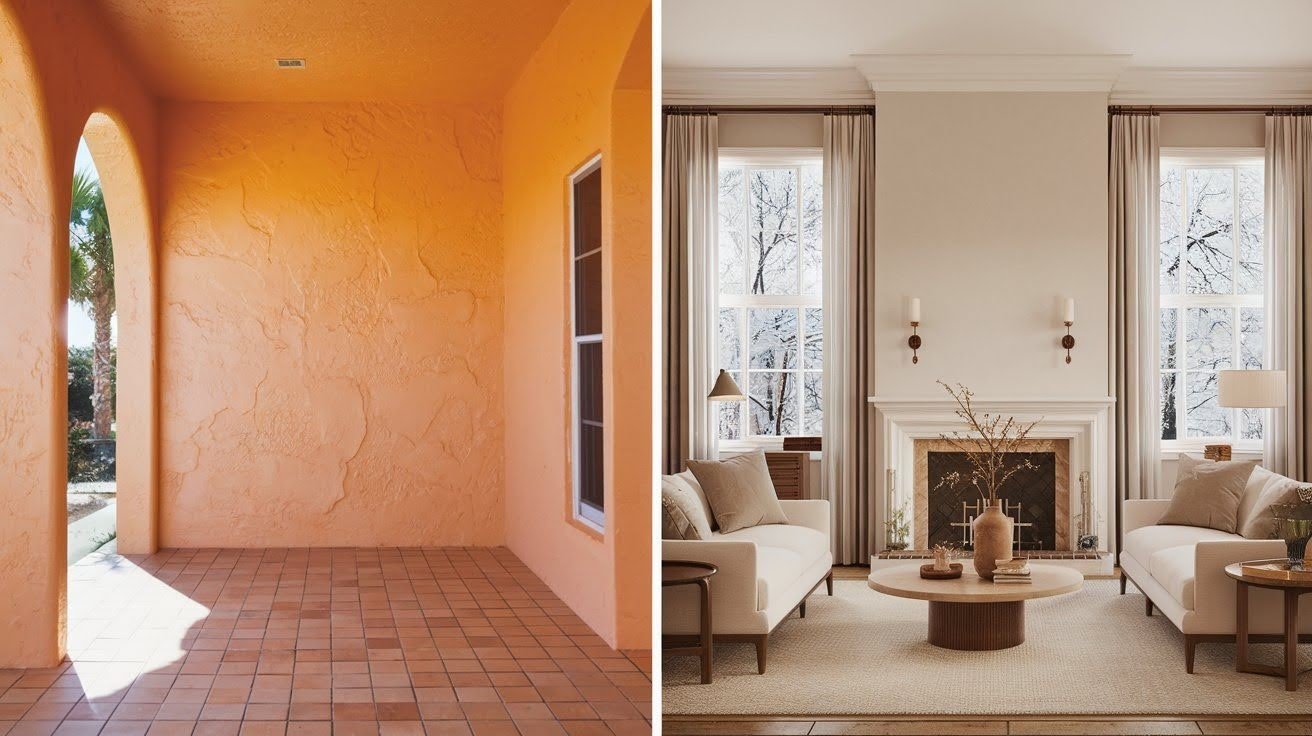
Geography matters when choosing wall textures. In Texas and Florida, orange peel is the standard finish. Walk into any home built in the last 30 years, and you’ll likely see textured walls throughout.
But head to the Midwest or East Coast? Smooth walls dominate those markets. It’s a regional preference that affects resale value and buyer expectations.
Builders love orange peel texture for one simple reason: it saves money: less labor, fewer materials, and faster completion times.
Advantages of Orange Peel Texture
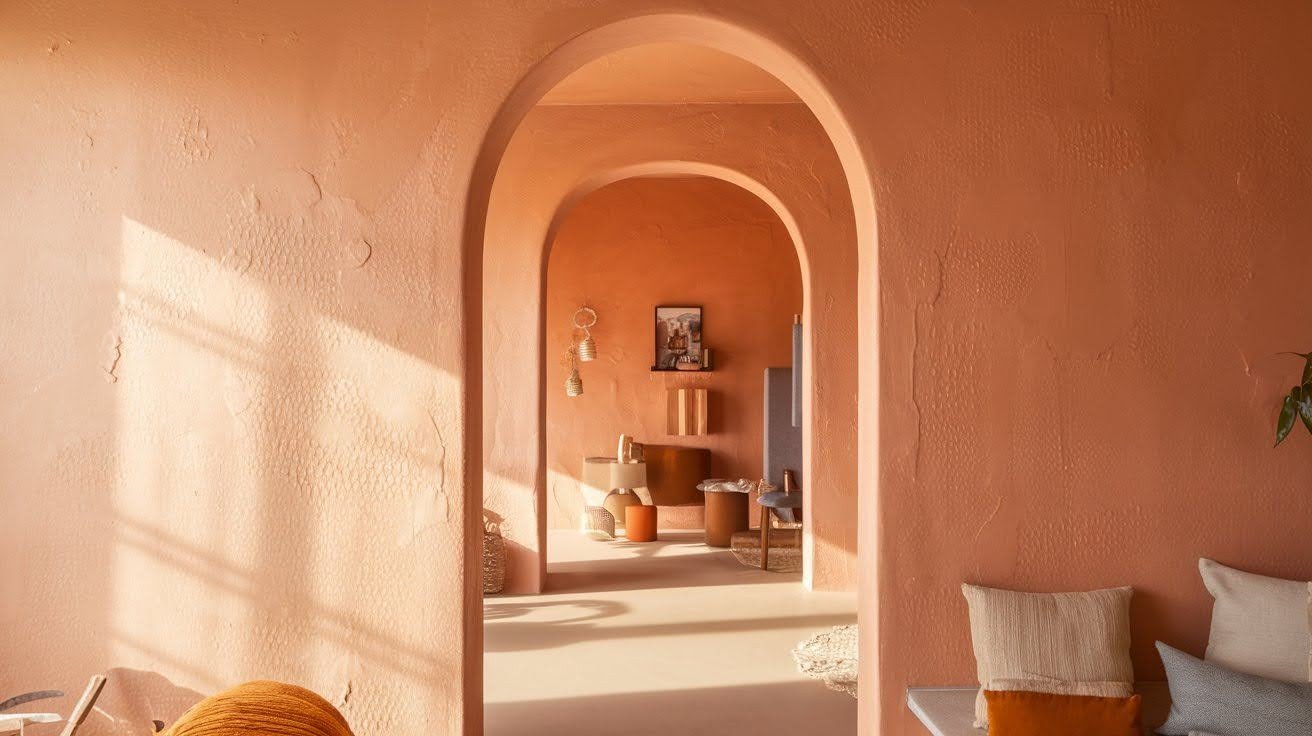
Cost-effective application makes this finish attractive to builders and homeowners. You’ll spend less on labor and materials compared to smooth finishes. Hides imperfections better than any other standard wall finish.
Those drywall seams and tape lines? They disappear under an orange peel texture. Easy application means faster project completion. Most contractors can texture a room in hours, not days.
Durability is another strong point. This finish handles normal wear and tear without showing damage easily. Style versatility works with traditional, contemporary, and transitional home designs. It doesn’t limit your decorating options.
Paint compatibility means you can use any paint type over an orange peel texture. No special primers or paints required. Easy maintenance keeps your walls looking good. Minor scratches or dings blend into the existing texture pattern.
Disadvantages of Orange Peel Texture
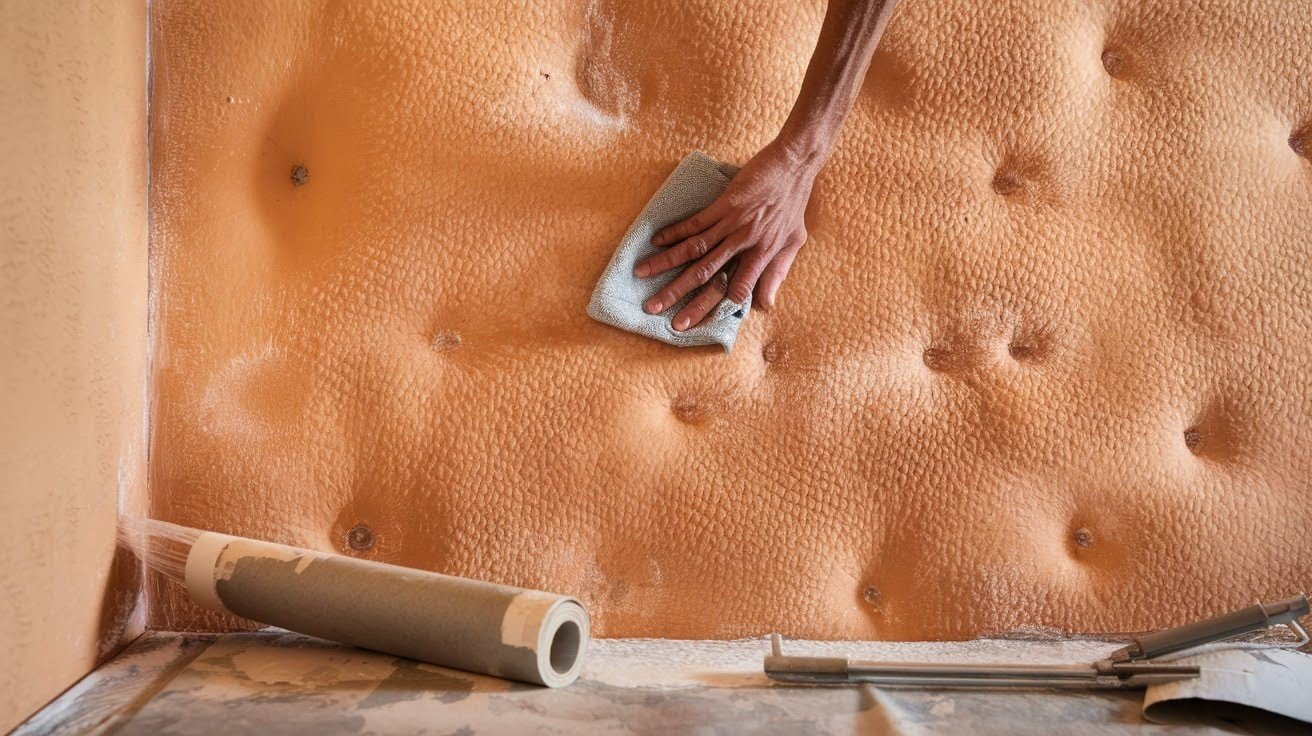
Aesthetic limitations turn off some homeowners. They view texture as less refined than smooth walls. Wallpaper incompatibility means you can’t add wallpaper later without significant wall preparation.
Dust collection occurs in the small, dimpled areas. You’ll need to clean the walls more frequently. Cleaning challenges make maintenance more complicated than on smooth surfaces. Dust and dirt stick to the texture pattern.
Understanding Smooth Wall Finishes
Smooth wall finishes give clean results. Learn the types, where they work best, and how to get a neat surface.
What are Smooth Walls?
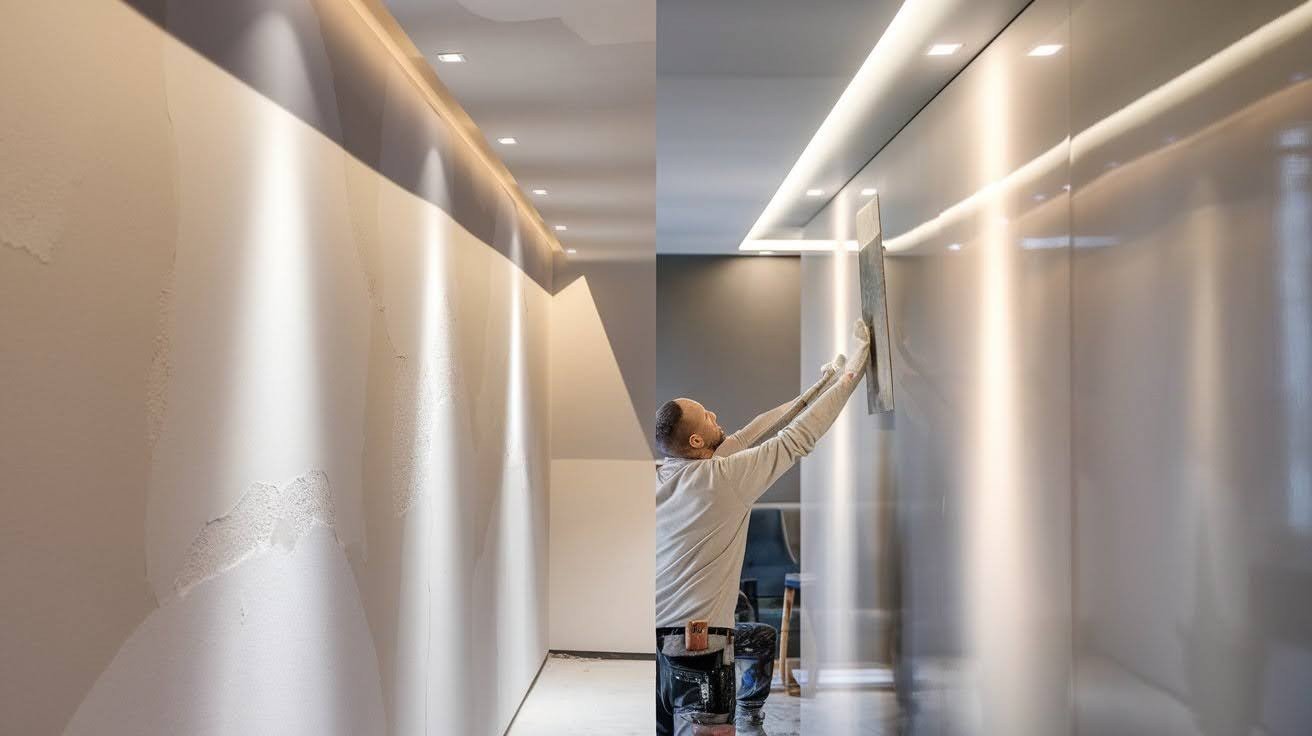
Smooth walls come in two main categories that most people don’t know about. Level 4 finishes look smooth from a normal viewing distance. But get close, and you’ll see subtle texture variations.
These walls receive a skim coat over taped seams. Level 5 finishes are museum quality. They’re completely smooth with no visible texture at all.
These walls get multiple skim coats across the entire surface. The difference in cost? Significant. Level 5 finishes require additional skim coats and extensive sanding.
Every square inch gets covered with joint compound, then sanded perfectly flat. Higher skill levels are essential for smooth wall installation. Not every contractor can produce quality results.
Regional Usage
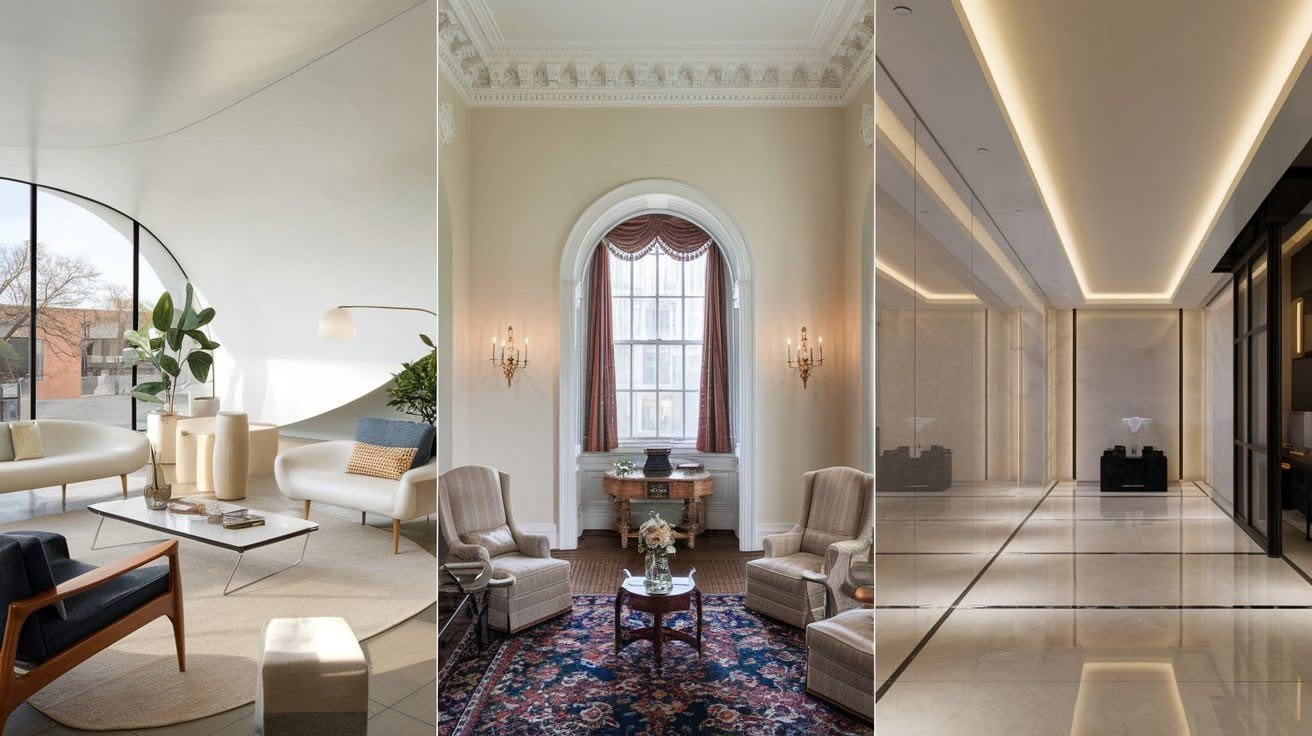
Geography plays a huge role in smooth wall preferences. States outside Texas and Florida typically use smooth finishes as standard. Walk through homes in California, New York, or Illinois, and you’ll see smooth walls everywhere.
Older homes built before 1950 almost always feature smooth walls. Texture wasn’t popular until the 1960s construction boom. Upscale and luxury homes expect smooth finishes regardless of region. It’s considered the premium option.
Advantages of Smooth Walls

Premium appearance gives your home a high-end, refined look that never goes out of style. Timeless appeal means your walls won’t look dated in 20 years. Smooth finishes have been popular for over a century.
Paint versatility works with every paint type, including high-gloss finishes. Try putting high-gloss paint on textured walls, and you’ll see every imperfection.
Wallpaper-ready surfaces accept wallpaper without additional preparation. The smooth base prevents bubbles and wrinkles. Easy cleaning makes maintenance simple.
A damp cloth removes most dirt and marks. Light reflection improves room brightness. Smooth surfaces bounce light evenly throughout the space. Trim compatibility provides the perfect base for decorative molding and crown molding installation.
Disadvantages of Smooth Walls
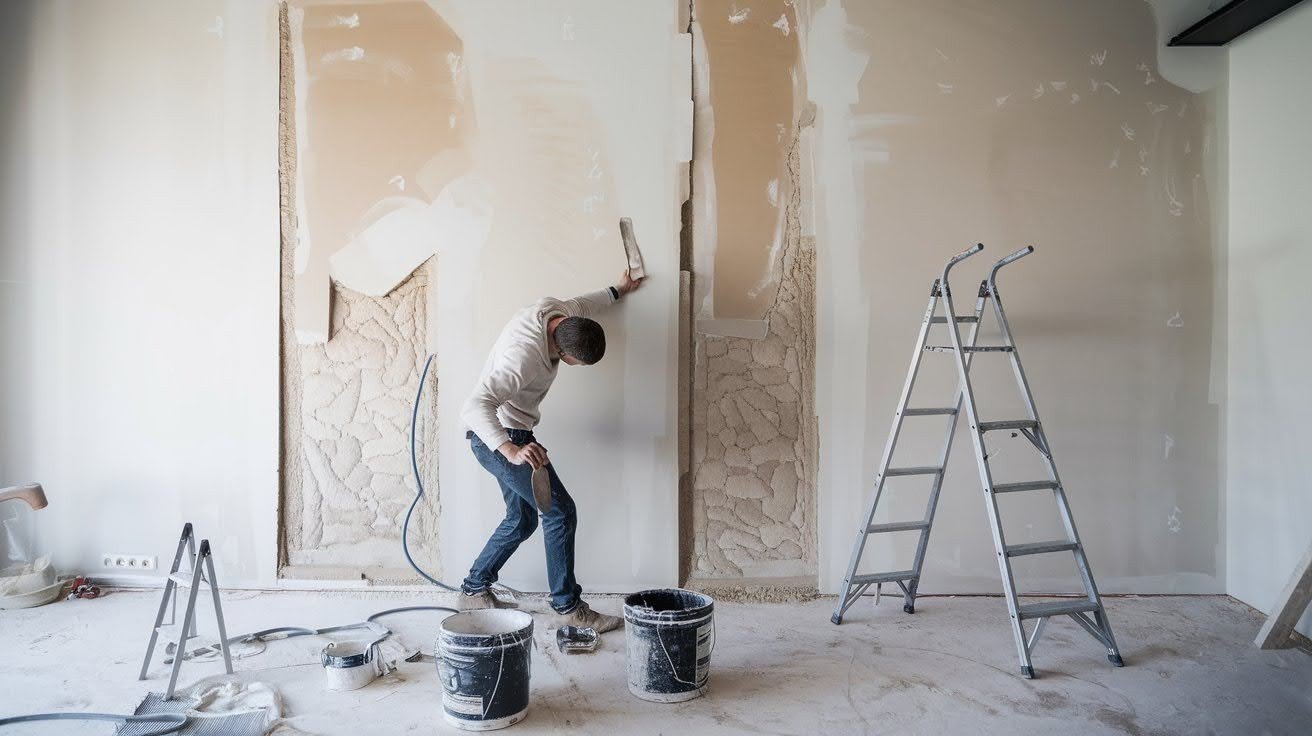
Higher cost hits your budget hard. Expect to pay 40-60% more than textured finishes. Labor-intensive application requires skilled artisans and multiple coats. Each coat needs drying time and sanding.
Shows imperfections without any texture to hide flaws. Every drywall seam and nail pop becomes visible. Repair complexity makes future maintenance difficult. Patches show easily on smooth surfaces, requiring professional touch-ups.
Cost and Value Analysis
Compare prices with long-term benefits. This helps you pick options that make sense for your needs without wasting money.
Upfront Cost Differences
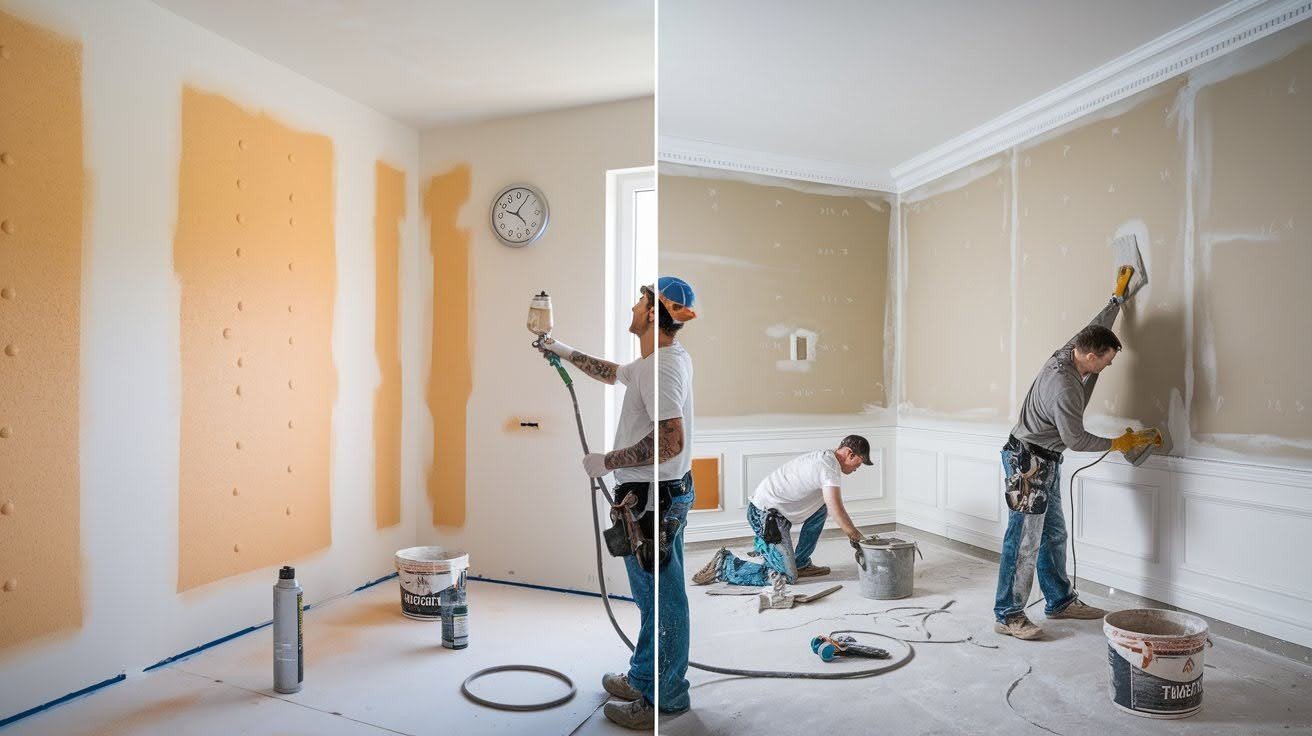
Orange peel texture saves money from day one. Labor costs stay low because contractors can finish rooms quickly. Material costs are minimal, too. Smooth walls cost significantly more. You’re paying for skilled labor, extra materials, and longer installation time.
Here’s the breakdown: Orange peel requires one spray application after basic taping. Total time: 2-3 hours per room. Smooth walls require multiple skim coats, followed by drying time and sanding.
Total time: 8-12 hours per room. Level 4 smooth finishes cost 40% more than orange peel. Level 5 finishes cost 60-80% more.
Long-term Value Impact
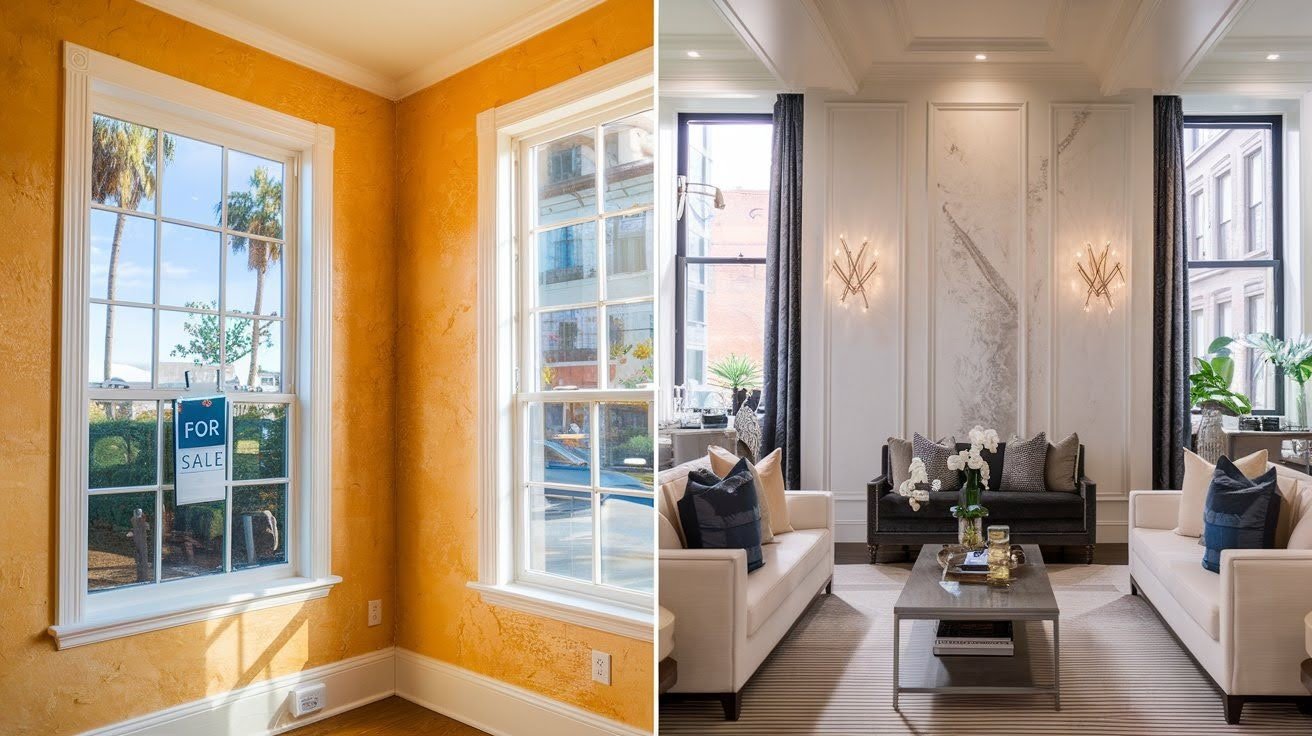
Regional markets determine resale value more than personal preference. In Texas and Florida, orange peel texture meets buyer expectations. Smooth walls seem unnecessary and expensive.
But in California or New York? Smooth walls add value because that’s what buyers expect. Maintenance costs differ, too. Orange peel hides minor damages, reducing repair frequency.
Smooth walls show every scratch and require professional touch-ups. Market expectations matter most. Choose the finish that matches your area’s standard.
Going against local preferences can hurt resale value, regardless of which option costs more upfront. Your home’s target market should guide this decision.
Aesthetic and Design Considerations
Choose the right finish and thickness to match your room’s look. Small design choices can change how the space feels.
Style and Lighting Impact
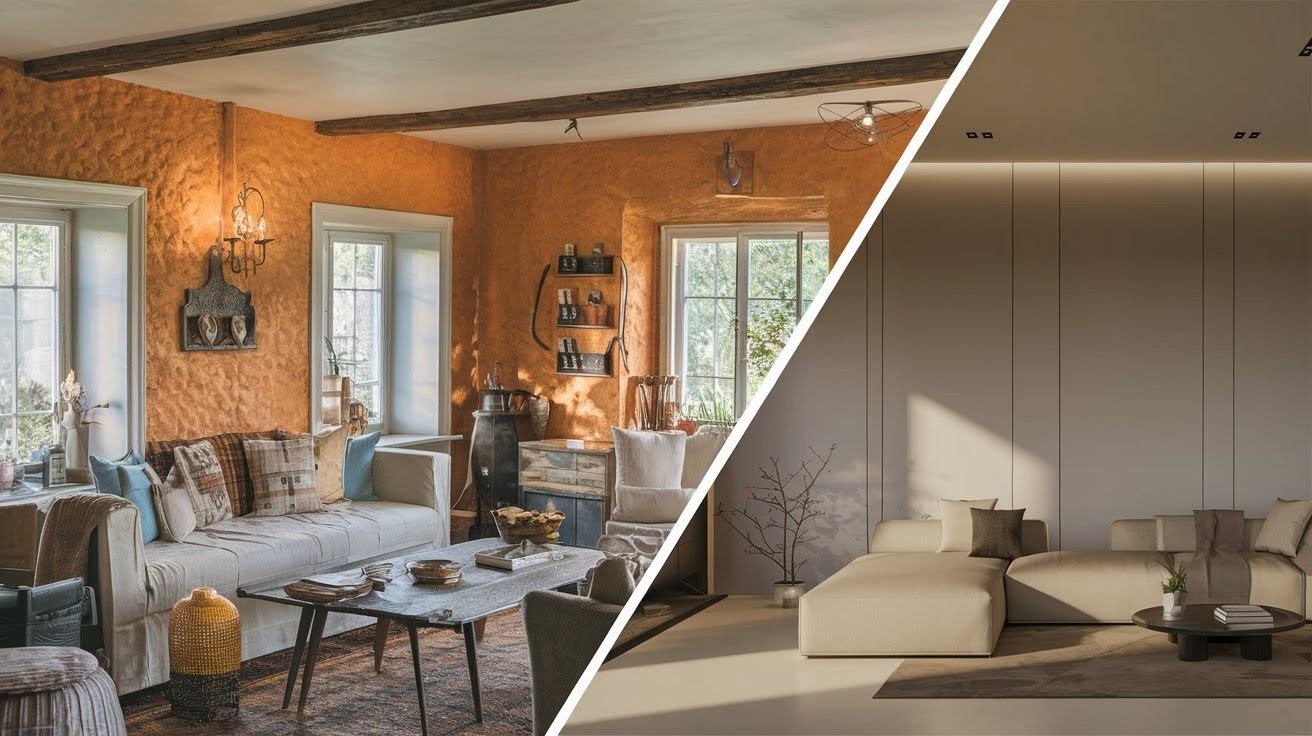
Orange peel texture works with most home styles. It fits Craft Revival homes, cottage-style interiors, and contemporary spaces equally well. Smooth walls shine in traditional and modern designs.
They create clean lines that complement minimalist and classic aesthetics. Lighting changes everything with textured walls. Orange peel creates small shadows that add visual depth.
Natural light softens these shadows during the day. But artificial lighting can make the texture more pronounced. Downcast lighting from recessed fixtures highlights every bump and dimple.
This effect can look interesting or distracting, depending on your preference. Smooth walls reflect light evenly. Rooms appear brighter because there’s no texture to create shadows.
Paint and Finish Options

Orange peel accepts most paint types without issues. Flat, satin, and semi-gloss paints all work well.
Smooth walls handle any paint finish.
This includes high-gloss paints that show every imperfection on textured surfaces. High-gloss paint requirements are strict. You need perfectly smooth walls for professional results. Orange peel texture will show through glossy finishes.
The wallpaper application is only possible on smooth walls. Texture prevents proper adhesion and creates bubbles. If you want wallpaper options later, choose smooth finishes from the start.
Making the Right Choice for Your Home
Pick what fits your home’s needs best. The right option offers better results, fewer issues, and lasting comfort over time.
Factors to Consider
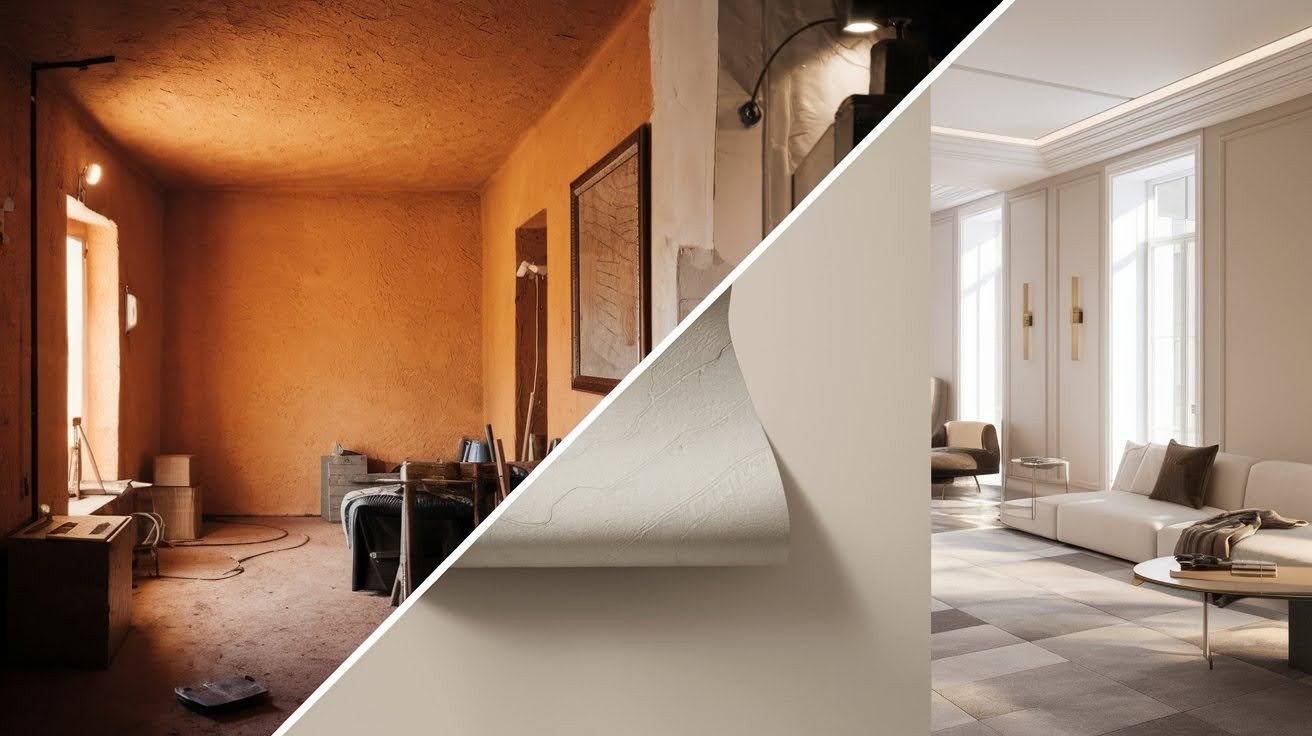
Budget matters most for many homeowners. Orange peel costs significantly less than smooth finishes.
Home style compatibility works both ways. Orange peel fits most designs, but smooth walls offer more versatility.
Lighting in your rooms affects how texture appears. Consider your natural light and fixture placement.
Plans should guide your decision. Want wallpaper someday? You need smooth walls.
Maintenance preference varies by person. Smooth walls clean more easily, but orange peel repairs are more straightforward.
When to Choose Orange Peel
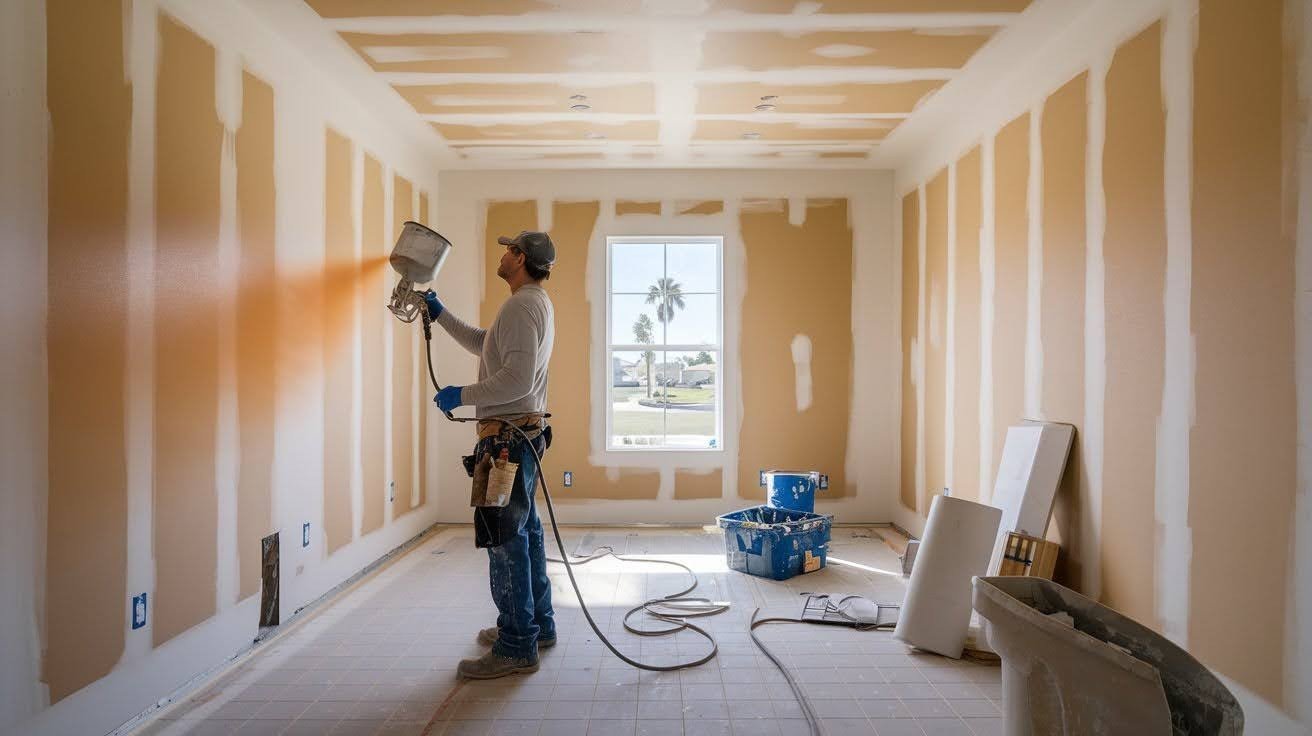
Budget-conscious projects benefit from orange peel’s lower costs. Homes with minor drywall imperfections hide flaws better with texture.
Standard regional construction in Texas and Florida uses orange peel. Quick project completion needs to favor spray-on texture application.
When to Choose Smooth Walls
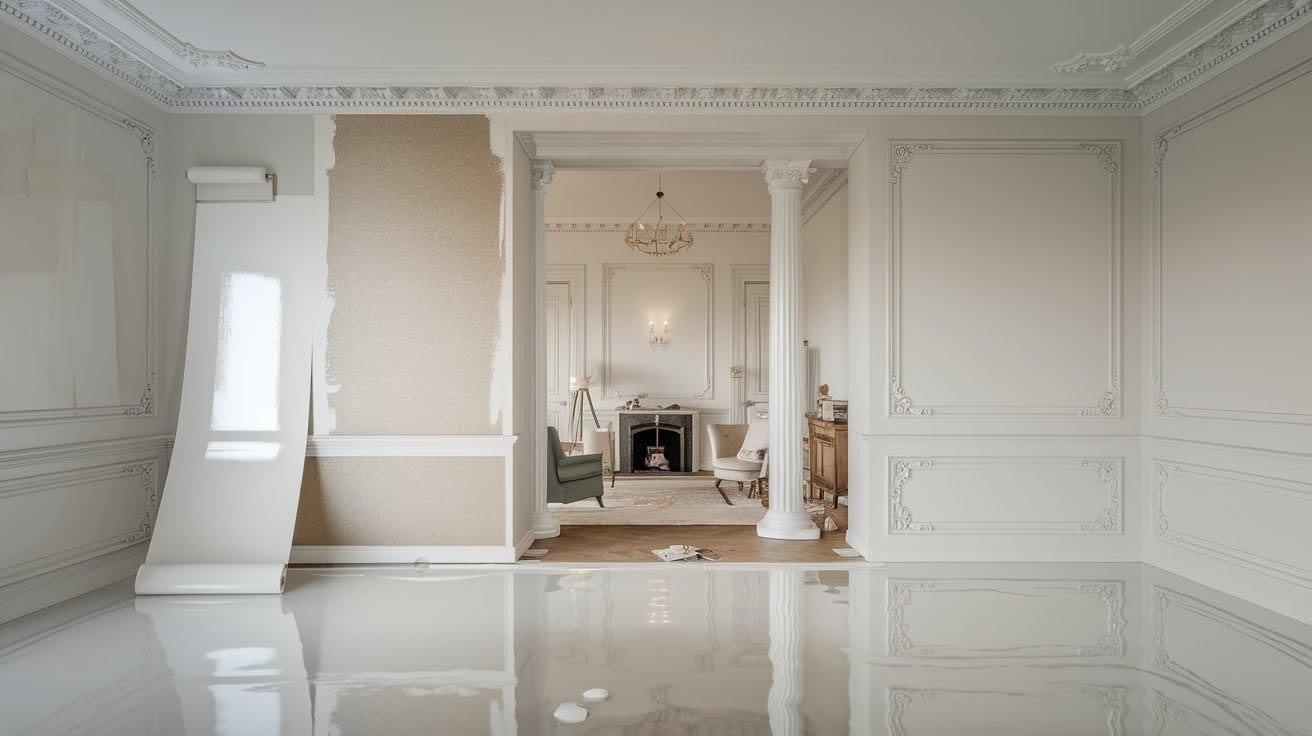
High-end home projects require smooth finishes for premium appeal. Wallpaper installation plans need smooth surfaces for proper adhesion. High-gloss paint applications only work on perfectly smooth walls.
Timeless design goals favor a smooth, classic wall appearance. Older home restoration projects typically feature smooth finishes.
Conclusion
The orange peel texture vs smooth debate comes down to your specific needs and budget. Orange peel offers cost-effective application and good imperfection hiding, while smooth walls provide timeless appeal and maximum design flexibility.
Your decision should consider your local market standards, budget constraints, and long-term plans. Both options can create beautiful homes when chosen thoughtfully. You now have the information needed to make this choice confidently.
Consider your lighting, maintenance preferences, and future decorating plans before deciding.
Questions about your specific situation? Leave a comment below – I’d love to help you work through the details.
And if this guide helped you, share it with friends facing the same decision. Making informed choices leads to homes you’ll love for years to come.
Frequently Asked Questions
What is the main difference between the orange peel texture and smooth walls?
Orange peel has subtle dimples resembling orange skin, while smooth walls are flat. Orange peel costs less and hides imperfections smooth walls offer a premium appearance and design flexibility.
Which costs more – orange peel texture or smooth walls?
Smooth walls cost 40-80% more than orange peel texture due to additional labor, materials, and skilled installation requirements. Orange peel is the budget-friendly option.
Can you apply wallpaper over orange peel texture?
No, wallpaper cannot be applied over orange peel texture. The bumpy surface prevents proper adhesion and creates bubbles. Smooth walls are required for wallpaper installation.
Which wall finish is better for resale value?
It depends on your region. Texas and Florida prefer orange peel texture, while most other states expect smooth walls. Choose based on local market standards.
Is orange peel texture easier to maintain than smooth walls?
Orange peel is easier to repair since the damage blends into the existing texture. However, smooth walls are easier to clean. Both have maintenance advantages depending on your needs.

